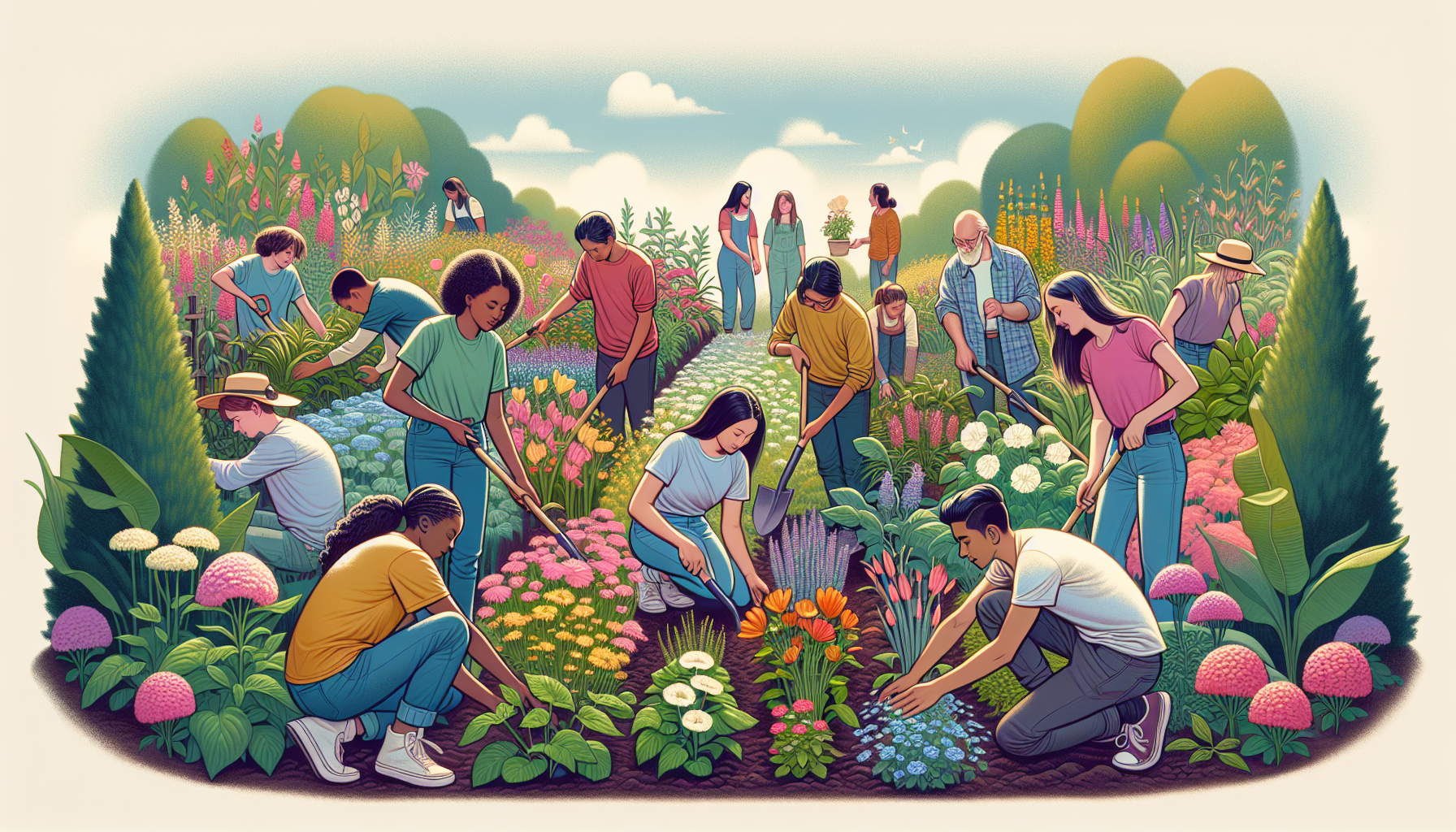Engaging students with collaborative projects can feel like trying to herd cats. With distractions and different learning styles, getting everyone on the same page seems daunting. It’s understandable if you sometimes feel like your classroom is more chaos than collaboration.
But don’t worry, if you stick with me, I promise you’ll uncover effective strategies that make partnering up not just manageable, but fun! You’ll discover how to turn those confused, disengaged faces into excited collaborators.
Together, we’ll dive into the numerous benefits, types of projects, and practical steps you can take. Let’s explore tools that enhance the experience and address challenges head-on. Your journey to engaging students in collaborative projects begins now!
Key Takeaways
- Collaborative projects boost student engagement by encouraging teamwork and creativity.
- Small groups tackling common goals allow each student to contribute their strengths.
- Benefits include improved communication, responsibility, critical thinking, and problem-solving skills.
- Diverse project types can include presentations, community service, or creative arts.
- Define clear goals, form diverse groups, and set roles to ensure accountability.
- Incorporate various learning styles and technology to enhance the experience.
- Assess participation through peer evaluations and self-reflection prompts.

Engaging Students with Collaborative Projects
Collaborative projects are a great way to engage students. They foster teamwork and creativity while allowing students to learn from each other. By working together, students tackle real-world problems, developing not just knowledge but also essential social skills.
One of the easiest ways to start implementing collaborative projects is to create small groups that address a common goal or challenge. This way, each group member can contribute their strengths and perspectives, making the project richer and more interesting.
For example, a science project on renewable energy could see students working in teams to design a small solar-powered device. Each student can take charge of a specific area, such as research, design, or presentation, encouraging them to contribute actively while honing their individual skills.
Benefits of Collaborative Projects for Students
Engaging in collaborative projects comes with a myriad of benefits for students. First, they improve communication skills, as students must express their thoughts clearly and listen to others. This interaction not only nurtures verbal skills but also enhances empathy and understanding.
Additionally, collaboration fosters a sense of responsibility. Each student realizes their contributions matter to the group’s success, which can motivate them to take ownership of their tasks. This is especially effective in classrooms where students often work together frequently.
Moreover, these projects encourage critical thinking and problem-solving. Students are challenged to consider different viewpoints and develop solutions collectively, enhancing their cognitive flexibility—a crucial skill for the 21st century.
Types of Collaborative Projects
When it comes to collaborative projects, the options are endless. Group presentations are a classic choice, where students can work together to create a cohesive narrative on a subject. This allows them to assign roles based on their strengths, whether it be research, visuals, or public speaking.
Another type could be community service projects, which can help students connect classroom learning with real-world issues. For instance, they could organize a cleanup or awareness campaign, helping them apply their knowledge while also benefiting the community.
Creative projects, such as collaborative art installations or writing a story as a group, are also effective. They not only promote teamwork but also allow students to express their creativity and personal experiences, making learning more meaningful.
Steps to Implement Collaborative Projects
To implement collaborative projects successfully, you can follow a few essential steps. Start by clearly defining the project goals and objectives so that students know exactly what they are working towards.
Next, form diverse groups, ensuring a mix of skills and perspectives. This variety will enrich discussions and problem-solving approaches.
Then, establish roles within the team, either based on students’ interests or strengths. This encourages accountability and gives everyone a specific responsibility.
Don’t forget to set deadlines and milestones to keep the project on track. Regular check-ins will help monitor progress and provide guidance as needed, allowing students to reflect on their work periodically.
Overall, the aim is to create a structured environment that still leaves room for creativity and exploration, making the learning process enjoyable and engaging.

Strategies to Enhance Student Engagement
To keep students engaged in collaborative projects, consider incorporating diverse learning styles into your approach.
This means recognizing that some students may grasp concepts better through hands-on activities, while others might thrive through visual aids.
Encourage students to present their findings in various formats: think videos, infographics, and even podcasts.
Offering choice helps cater to individual preferences while fostering creativity.
Another effective strategy is to establish a positive classroom culture where students feel safe to share ideas without fear of judgment.
Promote this by celebrating mistakes as learning opportunities and encouraging constructive feedback.
Additionally, setting up peer reviews can create a sense of ownership, making everyone invested in the project outcomes.
Finally, don’t forget to incorporate technology. Platforms like Google Docs or Padlet offer collaborative spaces for students to brainstorm and organize their work in real time, making it more dynamic and fun.
Tools and Resources for Collaborative Learning
Technology can streamline collaborative learning and make it more effective.
Start by exploring tools like Microsoft Teams, which offers excellent features for group chatting, video calls, and file sharing.
Another great platform is Trello, ideal for project management; it helps groups break down tasks and track their progress visually.
Google Workspace is also a must-have, allowing students to work together on documents, spreadsheets, and presentations simultaneously from anywhere.
Don’t overlook educational sites like Edmodo, where teachers can create a social media-like environment tailored for classroom interaction.
There are also resources like Khan Academy that provide collaborative exercises in subjects ranging from mathematics to the sciences, enhancing subject understanding through group work.
Finally, consider training students on using these platforms to maximize their potential, so they feel confident navigating them while collaborating.
Assessing Student Participation and Learning Outcomes
Assessment in collaborative projects should focus on both individual contributions and group dynamics.
To gauge participation, use peer assessments where students evaluate each other’s input and teamwork abilities.
Additionally, create self-reflection prompts to encourage students to think critically about their roles and contributions to the project.
It’s also helpful to establish clear criteria for success from the start, allowing students to understand what is expected of them.
Incorporating checkpoints throughout the project for formative assessments can track students’ understanding and progress.
Lastly, consider using digital portfolios where students showcase their collaborative work, providing a comprehensive view of their skills and learning journey.

Overcoming Challenges in Collaborative Projects
Collaborative projects can be challenging, but with the right strategies, these hurdles can be managed effectively.
One common challenge is conflicting personalities within a group. To address this, set clear expectations for communication and respect from the start.
If disagreements arise, encourage students to resolve conflicts by discussing their differences openly and finding common ground.
Another issue can be uneven participation, where some students may dominate while others stay quiet. To mitigate this, try assigning specific roles to ensure that everyone has a chance to contribute.
Regular check-ins can also help keep everyone accountable and engaged, as students discuss their progress and share responsibilities.
Lastly, technical difficulties can impede progress in projects that rely heavily on technology. Provide thorough training on necessary tools beforehand, so everyone feels comfortable using them.
Real-Life Examples of Successful Collaborative Projects
Real-life examples can provide great inspiration for your collaborative projects.
Take, for instance, a high school in California that focused on a community garden project.
Students collaborated to design, plant, and maintain a garden, which not only taught them about botany but also about sustainability and teamwork.
The end result was a beautiful space that benefited the local community, sparking further interest in environmental issues.
Another example comes from a college course dedicated to solving real-world engineering problems.
Students teamed up with local businesses to develop new products and services, gaining invaluable hands-on experience.
This collaboration led to innovative solutions that the businesses could implement, creating a win-win for all involved.
Such examples show that with creativity and planning, collaborative projects can yield remarkable outcomes and enrich students’ learning experiences.
FAQs
Collaborative projects foster critical thinking, improve communication skills, and boost student motivation by promoting teamwork. They also help students develop social skills and learn from their peers’ diverse perspectives.
Teachers can assess participation through peer evaluations, self-assessments, and observation checklists. Utilizing rubrics focused on individual contributions can also ensure fair evaluation of each student’s engagement and learning outcomes.
Common challenges include uneven participation, differing skill levels, and logistical issues. Teachers may also struggle to create effective group dynamics and ensure all students are contributing meaningfully to the project.
Tools like Google Workspace, Microsoft Teams, and collaborative platforms such as Padlet and Trello enhance communication and organization in group projects, making it easier for students to collaborate and share resources effectively.
